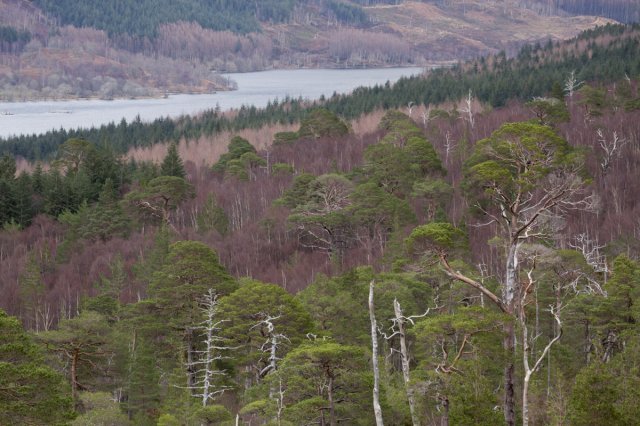Restoring ancient woodland
,
Tim Hall, Head of Operations at the Woodland Trust Scotland, takes a journey through Scotland's ancient woodlands and highlights the importance of restoring this incredible habitat. This was recently published in the Scottish Wildlife Trusts, 50 for the Future blog, listing 50 things that they believe should happen in Scotland over the next 50 years to benefit both people and wildlife.
Woodlands are a whole lot more than a bunch of trees that happen to grow in the same place. Let’s imagine a journey from the depths of the sub-soil through the layers of decaying organic matter, micro-fauna and flora, roots and mycorrhiza. We break the soil surface, traveling upwards through yet more multiple layers of complexity; specialist fauna and flora each at home within their numerous niches, before we emerge through the trees into the open air above the canopy, buzzing with all the elements of life itself. We have just traveled a few meters through one of the most diverse and dynamic ecosystem on the planet.
This diversity and complexity takes a long time to evolve. Our ancient woodlands in Scotland are often defined as woodland that has been around since 1750, but this is misleading, confusing part of the evidence we use to determine a woodland’s age (1750 being the date of our first reasonably comprehensive maps) with the definition itself. In fact, ancient woodlands are not really strictly defined by anyone – some of our oldest woodlands in Scotland probably go back to the retreat of the ice 10,000 years ago, some may be more recent, ‘merely’ many centuries old rather than millennia. What they all have in common is that they have had the time to evolve an unsurpassed ecological richness. They also reflect centuries of human activity too, making them cultural and ecological jewels that cannot be recreated or reproduced.

But our scarce ancient woodlands are under threat. High deer numbers in many parts of the Highlands is resulting in loss of this irreplaceable habitat. Development remains an issue too; despite positive planning policies and numerous objections, ancient woodlands are still being lost in the name of economic development.
There is one ray of hope however, one mechanism by which the area of ancient woodland with semi-natural characteristics in Scotland could be increased. In the 1960s, 70s and 80s many ancient woodlands were planted with non-native conifers, their rich forest soils seen as an ideal medium for producing good quality softwood timber. Whilst this did damage the ecological communities associated with them, it didn’t destroy them entirely. Now that many of these forests are coming to the end of their first rotation there is an opportunity to begin to restore these forests, to safeguard and expand the precious remnants of ancient woodland communities that have survived.

This doesn’t mean that they can no longer produce any economic benefits; far from it. Restoration is best carried out as a gradual process. If the Woodland Trust is successful in securing the funds for the restoration of the pinewoods at Loch Arkaig for example, we will be working in partnership with the local community, creating jobs and making a significant and long-term economic investment in the area.
The economic and social benefits of the restoration process for rural communities can be significant. More importantly though, for me at least, if we seize the opportunity to restore our ancient woodlands, it means that our children and our grandchildren can continue to enjoy the sheer pleasure and sense of wonder that only the rich tapestry that is ancient woodland can provide.
Tim Hall is Head of Operations at the Woodland Trust Scotland. He is a Chartered Forester with over 20 years’ experience in woodland and greenspace management for people and wildlife.This was recently published in the Scottish Wildlife Trusts, 50 for the Future blog, lists 50 things that they believe should happen in Scotland over the next 50 years to benefit both people and wildlife.
